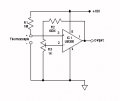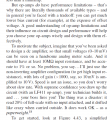Hello everyone,
I'm currently working on a project where I need to interface a K-type thermocouple with an Atmega1280 MCU. However, I'm encountering some difficulties in amplifying the signal of the thermocouple to make it readable by the MCU.
I understand that the conventional solution would be to use a dedicated thermocouple amplifier like the MAX6675. However, due to project constraints, I'm unable to utilize off-the-shelf components like the MAX6675, as I'm aiming to design a custom PCB for this application.
I'm seeking guidance on how to effectively amplify the signal of the K-type thermocouple using discrete components that are compatible with the Atmega1280 MCU. Any insights, schematics, or recommendations for components that could help me achieve this would be greatly appreciated.
Thank you in advance for your assistance.
I'm currently working on a project where I need to interface a K-type thermocouple with an Atmega1280 MCU. However, I'm encountering some difficulties in amplifying the signal of the thermocouple to make it readable by the MCU.
I understand that the conventional solution would be to use a dedicated thermocouple amplifier like the MAX6675. However, due to project constraints, I'm unable to utilize off-the-shelf components like the MAX6675, as I'm aiming to design a custom PCB for this application.
I'm seeking guidance on how to effectively amplify the signal of the K-type thermocouple using discrete components that are compatible with the Atmega1280 MCU. Any insights, schematics, or recommendations for components that could help me achieve this would be greatly appreciated.
Thank you in advance for your assistance.







